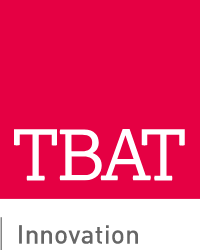


Sam Stephens
Director
In the dynamic landscape of innovation, companies are constantly seeking avenues to fuel their research and development (R&D) endeavours while maximising returns on their intellectual property (IP) investments. Two key mechanisms that play a pivotal role in this journey are R&D tax relief and Patent Box. But what happens when these two powerful incentives come together?
R&D Tax Relief: Fuelling Innovation
Research and Development (R&D) tax relief is a government incentive designed to encourage innovation by offering tax breaks to companies who are engaged in qualifying R&D activities. The allure of R&D tax relief lies in its ability to alleviate the financial burdens associated with innovation. Whether you’re developing new products, processes, or services, R&D tax relief provides a financial boost by reducing your corporation tax liability or offering cash credits for eligible R&D expenditure.
This financial boost not only facilitates the exploration of new ideas but also encourages risk-taking and experimentation. In an environment where uncertainty is inherent to innovation, R&D tax relief provides a safety net, empowering companies to push the boundaries.
Open to companies of all sizes, regardless of whether they are making a profit or loss, R&D tax relief currently boasts separate schemes for SMEs and large enterprises. However, it’s worth noting that a merged R&D scheme will be introduced for accounting periods commencing on or after 1 April 2024. This unified scheme closely resembles the Research and Development Expenditure Credit (RDEC), currently accessible for large corporations and subsidised projects for SMEs.
Patent Box: Maximising IP Returns
In contrast to R&D tax relief, Patent Box operates on a different premise, focusing specifically on incentivising companies to invest, protect and exploit their intellectual property (IP) assets, particularly through patents. This scheme works by offering a reduced rate of corporation tax on profits directly attributable to patented inventions. By providing a favourable tax environment for companies that hold patents, businesses are encouraged to prioritise the exploitation of their innovative ideas and technologies.
Companies are encouraged to disclose their patented inventions, leading to greater transparency and dissemination of valuable technological insights. This sharing of knowledge not only benefits individual businesses but also contributes to the overall advancement of technology and innovation within society.

Harnessing Synergies
While R&D tax relief and the Patent Box serve distinct purposes, they often overlap, amplifying their impact on businesses. Here’s how they work hand in hand:
TBAT Innovation: Your Partner in Innovation
At TBAT Innovation, we understand the intricacies of R&D tax relief and the Patent Box scheme, and we’re here to help you navigate the two different reliefs with confidence.
Whether you’re exploring new R&D opportunities, seeking patent protection for your inventions, or optimising your tax incentives, our team of expert R&D consultants are on hand to help. We’re committed to empowering businesses to thrive in today’s innovation-driven economy and would love to assist, Get in touch with us today.
Since 2022, HMRC’s Mandatory Random Enquiry Programme (MREP) has been reviewing R&D tax relief claims to reduce error and fraud. While the programme is effective in improving compliance, it has also caused a significant drop in SME claims. This article examines the impact of MREP on SME behaviour, explores why businesses are withdrawing from claiming, and questions whether the programme is supporting innovation or discouraging genuine R&D activity.

We take an in-depth look at the latest R&D Tax Credit Statistics, covering the period ending March 2024, highlighting key updates and trends in the R&D tax relief landscape. It covers changes to the SME and RDEC schemes, the introduction of new requirements such as the Claim Notification process, and developments in HMRC compliance through the Mandatory Random Enquiry Programme.

Assists organisations in accessing research and development grant funding across a range of UK and EU schemes and industry sectors.
Get In Touch